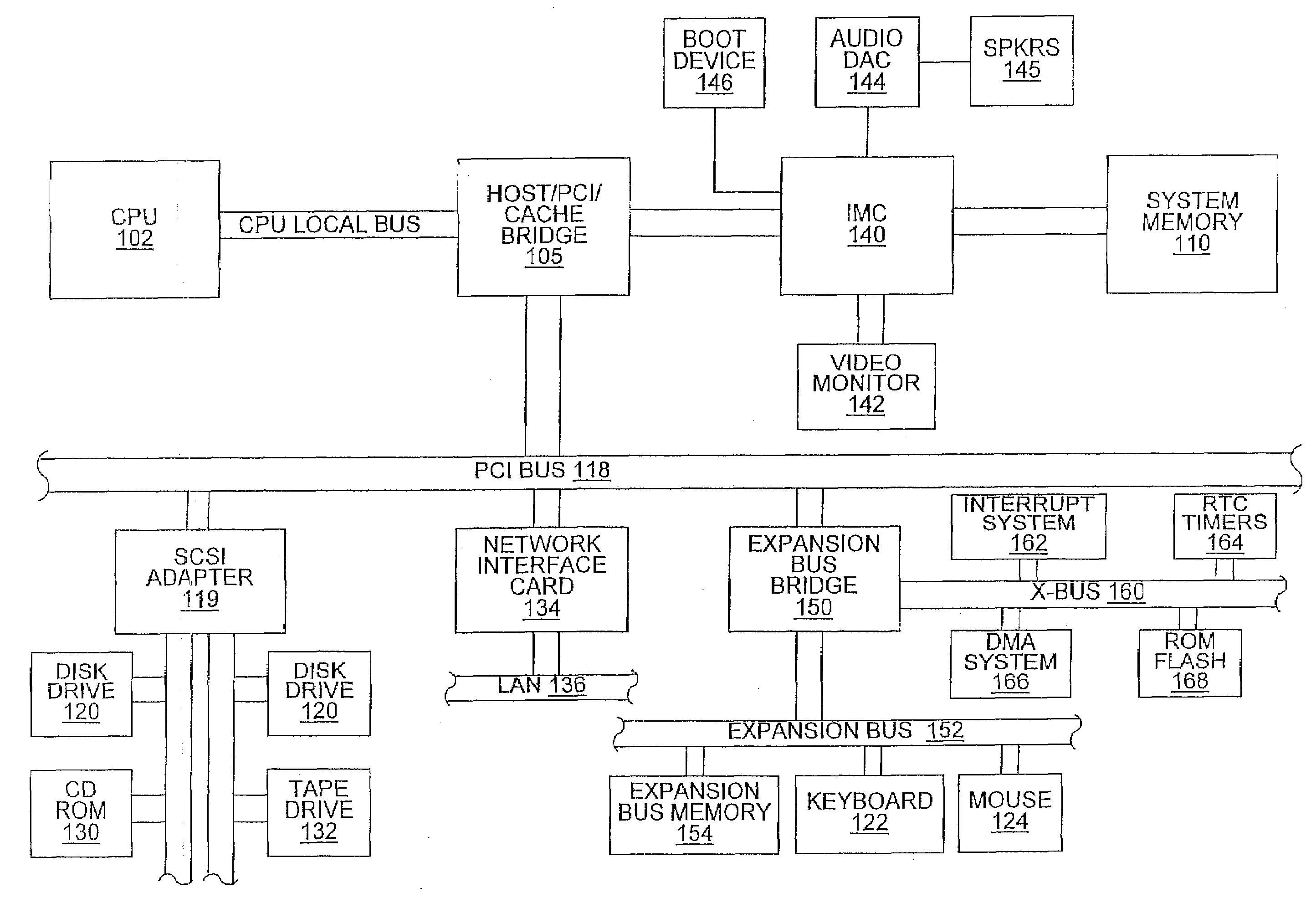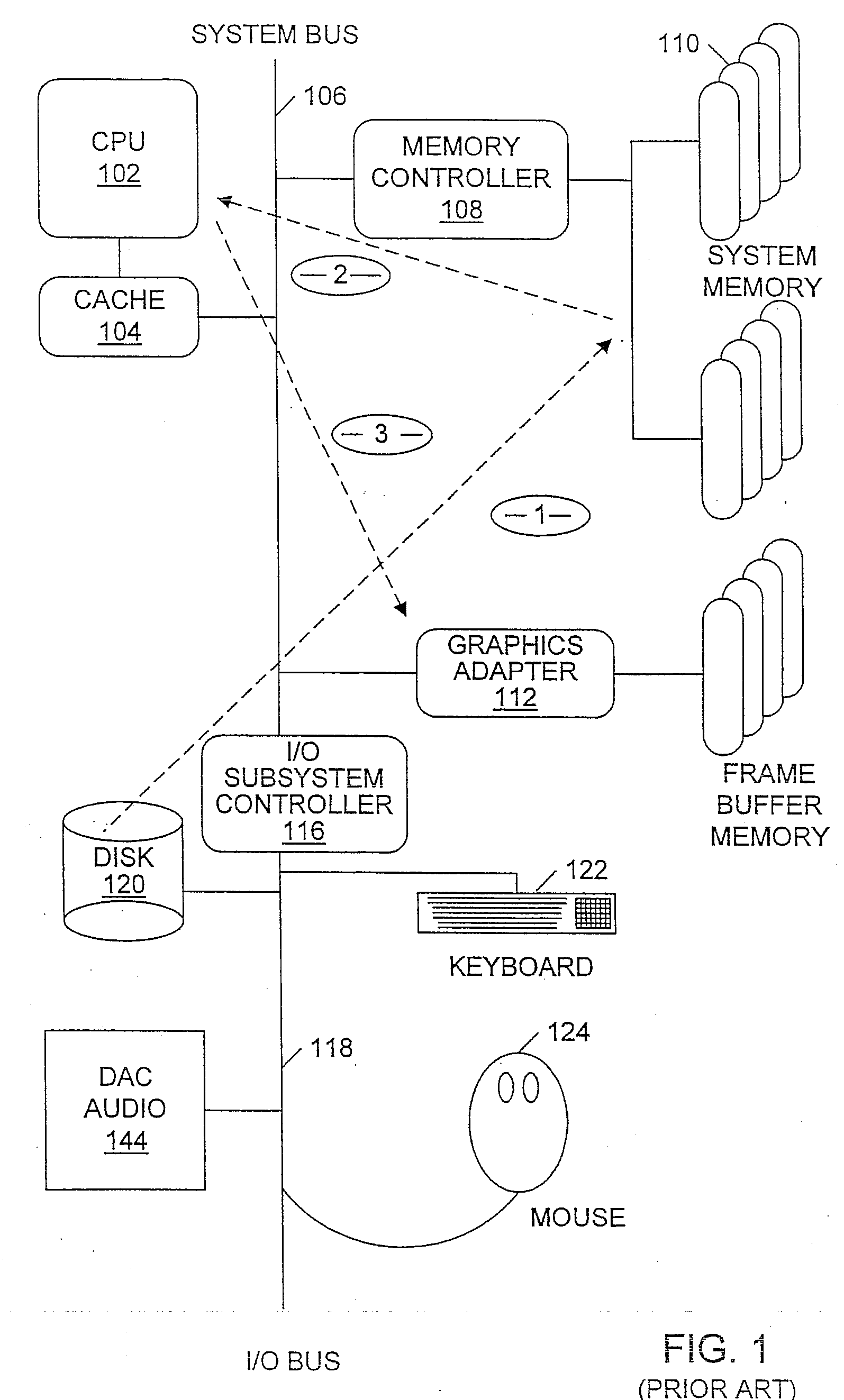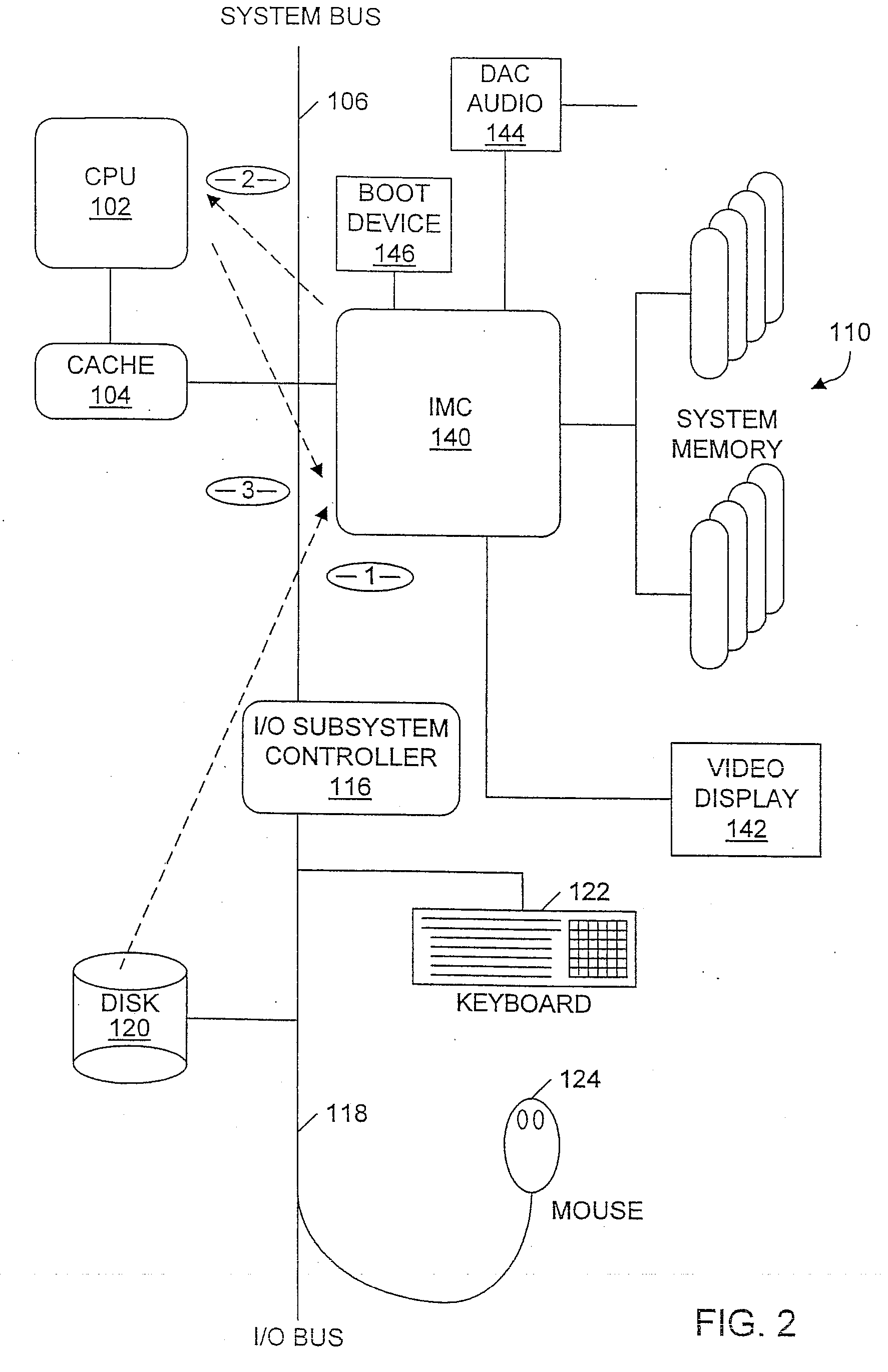Memory controller including a hardware compression and decompression engine for managing system memory and graphical operations
a hardware compression and decompression engine and memory controller technology, applied in the field of computer system architectures, can solve the problems of small performance penalty and limited live video, and achieve the effects of improving system performance, removing system bottlenecks, and increasing performan
- Summary
- Abstract
- Description
- Claims
- Application Information
AI Technical Summary
Benefits of technology
Problems solved by technology
Method used
Image
Examples
Embodiment Construction
Incorporation by Reference
[0040]U.S. patent application Ser. No. 08 / 340,667 titled “Integrated Video and Memory Controller with Data Processing and Graphical Processing Capabilities” and filed Nov. 16, 1994, is hereby incorporated by reference in its entirety.
Prior Art Computer System Architecture
[0041]FIG. 1 illustrates a block diagram of a prior art computer system architecture. As shown, prior art computer architectures typically include a CPU 102 coupled to a cache system 104. The CPU 102 and cache system 104 are coupled to the system bus 106. A memory controller 108 is coupled to the system bus 106 and the memory controller 108 in turn couples to system memory 110. In FIG. 1, graphics adapter 112 is shown coupled to the system bus 106. However, it is noted that in modern computer systems the graphics adapter 112 is typically coupled to a separate local expansion bus such as the peripheral component interface (PCI) bus or the VESA VL bus. Prior art computer systems also typicall...
PUM
 Login to View More
Login to View More Abstract
Description
Claims
Application Information
 Login to View More
Login to View More - R&D
- Intellectual Property
- Life Sciences
- Materials
- Tech Scout
- Unparalleled Data Quality
- Higher Quality Content
- 60% Fewer Hallucinations
Browse by: Latest US Patents, China's latest patents, Technical Efficacy Thesaurus, Application Domain, Technology Topic, Popular Technical Reports.
© 2025 PatSnap. All rights reserved.Legal|Privacy policy|Modern Slavery Act Transparency Statement|Sitemap|About US| Contact US: help@patsnap.com



